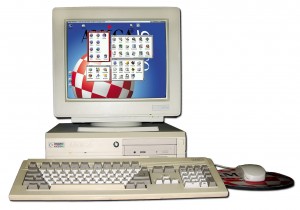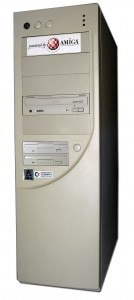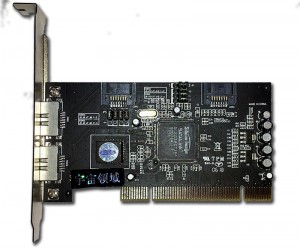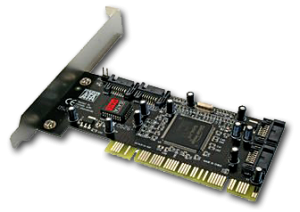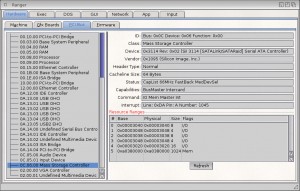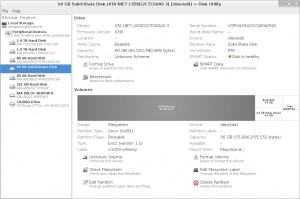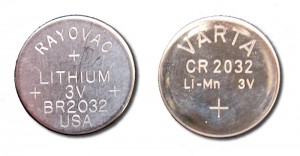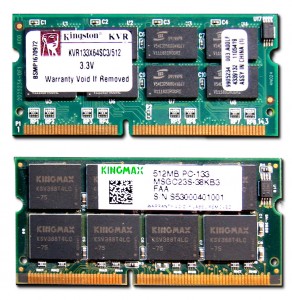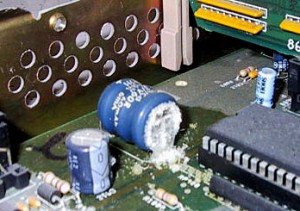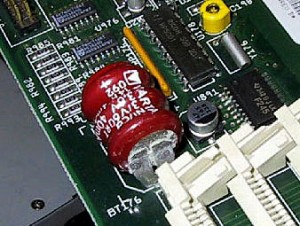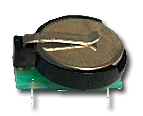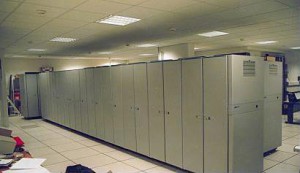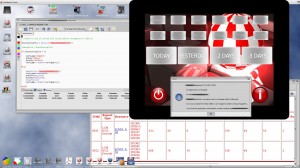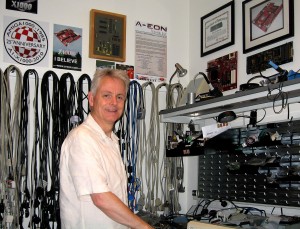New Year’s Resolutions
It's that time of year when people make and often promptly break their New Year's Resolutions. ![]()
I must admit, although I don't make any resolutions, I do use the start of a new year to reflect on my achievements (or lack of them) during the past year and set my goals and objectives for the year ahead. As I mentioned in my last blog I think 2013 is shaping up to be a very interesting year for the Amiga community. Now what about those New Year's Resolutions..............
Achieving SATA(is)faction?
I remember the days of trying to cram multiple expansion cards and HDDs into my overheating A4000 desktop and eventually, like so many others, I ended up performing a tower conversion to gain the extra space and cooling.
About 7 years ago when I acquired my first Next- Generation Amiga, an A1-XE, I also purchased a Sil3112 Serial ATA (SATA) controller card. Although it was not possible to directly boot AmigaOS 4 from the Sil3112 controller I wanted the option of using the much faster SATA HDDs. However, compared to my A4000, the A1-XE was more than fast enough and I never got around to installing the Sil3112 card. Fast-forward to November 2012. The AmigaONE X1000 was designed as a truly expandable machine for Amiga power users and hobbyists. Remembering my A4000 experience I wanted it to be able to easily accommodate all the extra cards and HDDs that I might throw at it. As a beta tester I have multiple versions of AmigaOS 4.1 installed on my A1-X1000. At the very least, this includes the latest beta releases, a clean copy of the current official version and my stable AmigaOS 4.1 beta installation...plus several backups. Also, as I maintain the GNU/Linux installation guide, I have up to 12 PowerPC Linux distributions installed on a variety of media from SATA HDDs, external USB HDDs, USB pen drives and even an IDE HDD carrier.
So including the DVD optical drive my 4 SATA ports and one IDE port are fully occupied. Since, the A1-X1000 is blessed with 8 internal HDD trays and multiple PSU leads I decided I would like to add some additional HDDs to hold the ever expanding number of PowerPC Linux distributions that the A1-X1000 supports thanks to the excellent work of Pat Wall and Daz "Kernel" Stevens. I managed to find the discarded Sil3112 card and installed it in my A1-X1000 together with a standard HDD and my new SSD. ![]() Actually, I'm still in two minds about SSD. Yes they are quiet, have no moving parts and in theory are much faster that tradition HDDs and unless you are into high-end video editing you are unlikely exceed the maximum number of read/write cycles. The manufacturers have assumed that you're more likely to discard the system for obsolescence before you start running into read/write errors. However, they are expensive and have a smaller capacity and if you are an Amiga user built in obsolescence might be a concern - we run our machines forever.
Actually, I'm still in two minds about SSD. Yes they are quiet, have no moving parts and in theory are much faster that tradition HDDs and unless you are into high-end video editing you are unlikely exceed the maximum number of read/write cycles. The manufacturers have assumed that you're more likely to discard the system for obsolescence before you start running into read/write errors. However, they are expensive and have a smaller capacity and if you are an Amiga user built in obsolescence might be a concern - we run our machines forever. ![]()
However, I digress. To my pleasant surprise the Sil3112 card worked out of the box and before long I had installed Debian Wheezy on the SSD and a full back-up of my working AmigaOS 4.1 system on the HDD with both devices running at full DMA speeds. All was well for a couple of weeks until I rebooted my machine following the installation of another round of OS 4.x beta updates. On reboot my Sil3112 card was not recognised? Obviously, I thought, something in the update was causing problems. Not so! After reversing the beta test updates, thank goodness for Simon Archer's AmiUpdate & System Rollback utility, the problem still remained. The Sil3112 card was visible in Ranger but any attempt to access the card via IDETool caused a "Grim Reaper".
To eliminate any potential AmigaOS 4.1 issues I attempted to boot Debian Wheezy from the SSD but again the card was not recognised. I then booted into MintPPC from another SATA HDD but still the card was not detected. After seeking the helpful advice from other beta testers I decided the card must have failed. However, this was not before I had removed every HDD, unplugged every cable and reseated every internal card and Ram module. Of course this had no effect but some old Amiga habits die hard. ![]() As a final test I transferred the Sil3112 card to a Micro A1-c and confirmed that the card was indeed faulty.
As a final test I transferred the Sil3112 card to a Micro A1-c and confirmed that the card was indeed faulty.
I managed to track down a SATA 3114 PCI 4-port controller to replace the faulty Sil3112 card and I'm pleased to report that this card also worked out of the box and the new HDDs are back up and running.
The card was correctly reported by Ranger in AmigaOS 4 and eight devices were recognised by GParted in Debian Wheezy. The only question now is what can I install on the extra two SATA ports? ![]() Incidentally, the PCI-e version of the Sil3114 card also works fine in the A1-X1000.
Incidentally, the PCI-e version of the Sil3114 card also works fine in the A1-X1000.
There's a hole in my bucket?
Do you notice that sometimes when you try to solve one problem you often create several more? When I decided to test the Sil3112 card in my Micro A1-C the first thing I discovered was the internal 3V lithium coin cell battery in the Micro had died. This manifested itself as a blank screen with no other sign of life when the machine was powered up. If you are lucky (and quick) you can remove the old battery and insert the new one without losing all the stored uBoot variables. This of course assumes that your battery is not totally flat.
On this occasion I had a spare CR2032 battery and was both lucky and quick and on power-up the Micro booted to Workbench as expected. The dead battery was the BR2032 variant and registered a mere 0.36V without any load. The new battery measured a healthy 3.3V. Most Lithium cells have a nominal terminal voltage of 3v however over time their voltage output isn't perfectly uniform. Because of the different design, the BR-type cell provides a more uniform voltage but near end of its life the terminal voltage drops rapidly. CR-cells however, exhibit a more gradual decline in voltage and may have a longer life in circuits designed to tolerate a wide range of terminal voltages. Although BR cells don't last as long, apparently they are better suited at sitting unused for long periods of time and can also operate at a higher ambient temperatures. So if your Amiga is likely to be off for long periods or you like to work in an oven then a BR cell might be a better option. However, they are more expensive than their CR counterparts. There is one major advantage of coin cells over the old 3.6v NiCd barrel batteries supplied in the big box Classic Amigas. Although not unheard of, whether it's the BR or CR models you rarely have to worry about leaking batteries eating away your precious mother-board. (see below for more details).
Having confirmed the the Sil3112 card was faulty I noticed that the Micro A1-c only had the original 256 MB Apacer PC133 SODIMM Ram installed. Unfortunately, most early next-generation machines are extremely sensitive to Ram type and the Micro A1-C is no exception. The Apacer Ram works well but I knew I had acquired some 512MB Ram modules which I had intended to try out. This included a Kingston KVR133X64SC3/512 and a Crucial CT64M64S4W75/512 Ram module which IntuitionBase reports are both compatible with the Micro A1-c.
Unfortunately, neither Ram sticks worked. With the Kingston RAM installed the Micro A1-c booted to Workbench and immediately locked up. With the Crucial Ram installed the machine would not even boot up. I also had a stick of Kingsmax MSGC23S-38KB3/512. Although this is not reported as being compatible I decided to give it a try anyway. Again it gave similar negative results. I replaced the original Apacer RAM module and the Micro booted normally. I suspect that the two "compatible" units might just be faulty as they were donated to me a few years back. Since I had the machine up and running I decided to install AmigaOS4.1 Update 6 and I'm please to say that the upgrade proceeded without a hitch. As you might expect, this little diversion ate up several hours of my day. At least the effort was not totally wasted. ![]()
Furry Battery Syndrome
Having lost my original A2000 motherboard to a leaking NiCd battery several years ago and seen the damage caused to several A4000 motherboards I'm very sensitive to furry battery syndrome. The white fur is caused by leaking battery fluid which is highly corrosive and can seriously damage your precious Amiga motherboard. This is a particular problem if you leave your Amiga powered off for long periods of time or you leave your machine in storage. To reduce the possibility of leaking battery damage it is recommended that, at the very least, you remove the NiCd battery from you classic Amiga. You can either de-solder the battery from the board or if your prefer just snip the 3 legs with wire clipper pliers to remove the battery.
If you want to replace your original Amiga battery use either a NiMH variant or better still replace it with a Lithium coin battery kit such as those supplied by AmigaKit.
These batteries are much less likely to leak and, in the case of the coin cell unit, make the battery very easy to replace in the future. The problem is not restricted to big box Amiga owners. Plug-in cards, like the A501 memory card for the A500, also contain NiCd batteries and can suffer from similar leakage issues. Don't take chances with your Classic Amiga hardware. If in doubt remove that old barrel type battery.
Note: If you do decide to install a Lithium coin cell remember they are not rechargeable. To prevent damage the battery kit supplied by AmigaKit contains a small circuit board. Without this fix your coin cell might just go bang!
Classic Reflections
A number of people have contacted me recently to say they like the Classic Reflections articles I write for Amiga Future Magazine. Its always good to know that my work is appreciated. To be perfectly honest, I get a great deal of personal enjoyment and satisfaction researching and writing the articles. The fact that other Amigans actually read and enjoy them too is an added bonus. ![]()
With Amiga Future about to publish it's 100th issue it won't be long before it overtakes the number of issues published by Amiga World, the first ever Amiga Magazine. All I can say is, long may it continue for many more years. Now what really did happen to..............?
Telecommunications - Amiga Style
A1-X1000 betatester and Classic Amiga enthusiast Carl Moppett (JurassicC) has been putting his A1-X1000 to good use to save his company time and money and improve the service to its customers. Carl is an engineer with a large UK based Telecom company and has used his Amiga to streamline fault detection and analysis in its customer support group. According to Carl, digital TDM (Time Division Multiplexed) telephone exchanges, such as the Nortel DMS100 and Marconi System-X have been around since the late 1980's. Although they have evolved into multicluster units designed to handle today's massive call volumes, fault detection and tracking still has its roots in the late 1980's/early 1990's.
Apparently there are thousands of these exchanges throughout the world, including the UK, Europe and USA, which are used by all the major Mobile and Fixed Line telecom providers. Telephone Exchanges are essentially huge computers running proprietary operating systems that pour out tonnes of logs for every little task they do. Consider an A1-X1000 set to serial debug level 10. Now imagine being able to set this debug level 10,000. Analyzing the sheer volume of serial debug data would be almost untenable. So all that logged data needs to be captured and processed in as close to real-time as possible. The logs need to be be sorted and prioritised and presented in a human readable format so that problems can be quickly identified to allow support teams to take the necessary corrective action to prevent or reduce service downtime. That is the massive task facing telecom providers. A single issue could go unnoticed in all the logged data resulting in a hardware failure that affects paying customers.
That's where Carl's A1-X1000 came to the rescue. He created a special App using Hollywood on his A1-X1000 which he cross-compiled for his employer's x86 machines. The App strips the data logs, sorts them into categories and presents them in either HTML or MS-EXCEL format which then links into the vendor documentation and performs trend analysis. Carl estimates his App is already saving his employer in excess of 350 man hours per year. Way to go Carl. Now what about that pay rise? ![]()
It's a small (Amiga) world!
Michael and Karen, the parent's of James, my daughter's partner, are visiting New Zealand at the moment. They hail from Minnesota's Twin Cities in the USA and have traveled south to visit their son and escape the winter freeze for a few weeks. Nothing unusual about that, but on meeting them for the first time yesterday they were particularly keen to see my Amiga collection? I incorrectly assumed that my daughter had informed them (or should that be warned them) about my Amiga obsession. ![]() Not so. Apparently Brad, a friend of theirs from Chicago is also an avid Amiga enthusiast and when he found out they were visiting us in New Zealand he was keen for them to take a few photographs of my Amiga collection. So Brad, this picture is just for you.
Not so. Apparently Brad, a friend of theirs from Chicago is also an avid Amiga enthusiast and when he found out they were visiting us in New Zealand he was keen for them to take a few photographs of my Amiga collection. So Brad, this picture is just for you. ![]() Both my daughters, Emma and Rachel, grew up with Amiga computers and Rachel even composed the AmigaONE X1000 boot theme (talk about keeping it in the family). Unfortunately, her partner James is an Apple user. I suppose there is no accounting for taste?
Both my daughters, Emma and Rachel, grew up with Amiga computers and Rachel even composed the AmigaONE X1000 boot theme (talk about keeping it in the family). Unfortunately, her partner James is an Apple user. I suppose there is no accounting for taste? ![]()
.....and finally, all work and no play?
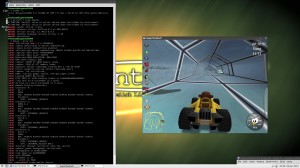 Xeno74 and TommySammy have created a new version of SuperTuxKart for PowerPC GNU/Linux systems capable of running Gallium 0.4 or higher with 2D/3D gfx card support. On the A1-X1000 this includes MintPPC 11, Debian Wheezy, Ubuntu 12.04, Fedora 17 beta and Red Ribbon RC6, etc. It is also compatible with certain PowerMac G5 models and the YDL Powerstation. The improved version of SuperTuxKart includes many new features including a Story mode, a new challenge set and improved AI, a reverse mode, skidding and better collision physics. Several new tracks (Green Valley and Blackhill Mansion) and updated tracks (XR591, Fort Magma, Jungle track and Sand) have also been added together with new music and updated menus. You can download SuperTukKart version 0.8 from the following LINK
Xeno74 and TommySammy have created a new version of SuperTuxKart for PowerPC GNU/Linux systems capable of running Gallium 0.4 or higher with 2D/3D gfx card support. On the A1-X1000 this includes MintPPC 11, Debian Wheezy, Ubuntu 12.04, Fedora 17 beta and Red Ribbon RC6, etc. It is also compatible with certain PowerMac G5 models and the YDL Powerstation. The improved version of SuperTuxKart includes many new features including a Story mode, a new challenge set and improved AI, a reverse mode, skidding and better collision physics. Several new tracks (Green Valley and Blackhill Mansion) and updated tracks (XR591, Fort Magma, Jungle track and Sand) have also been added together with new music and updated menus. You can download SuperTukKart version 0.8 from the following LINK

